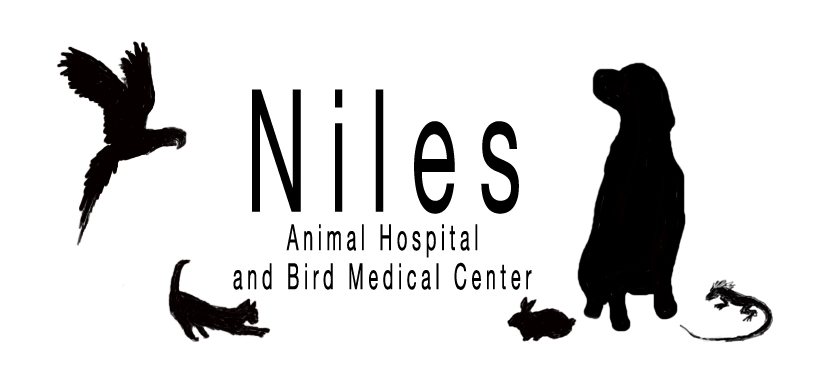
![]()

Halloween can be fun and festive for people, but for pets it can also be dangerous. There are many Halloween pet safety hazards that are well-known (such as chocolate toxicity) and some that are not (like xylitol toxicity). Here are some tips to help you ensure that your pet has a happy and safe Halloween.
Things to Watch For on Halloween
Halloween is fun for kids and adults, but it can be scary and stressful for pets.
- A constant ringing doorbell & strangely dressed people at the door can be stressful
for a pet. Some pets may experience diarrhea or even injure themselves if crated/ contained. Consider keeping your pet in a separate quiet room, away from the door, when trick-or-treaters arrive. Strange people in even stranger clothes can frighten some pets.
- Strangers in Costume may provoke an otherwise friendly pet into unexpectedly aggressive or fearful behavior.
- Pumpkins or candles within a pet’s range are a fire hazard. Wagging tails and frightened cats zipping through the house can easily knock over a lit pumpkin and cause a fire.
- Keep your pets indoors. Halloween pranks committed against pets can be vicious, and black cats are particularly at risk. Also, make sure that your pet doesn’t run out of your home when you answer the door. In case your pet does escape, make sure it is wearing proper identification. Pets with identification are much more likely to be returned.
- Halloween treats are for people, not pets. Be sure to warn children not to share their treats with pets. Candy wrappers and lollipop sticks can be hazardous if swallowed and chocolate is poisonous for some types of pets.
Candy Concerns
Candies, gum, mints, baked goods and chocolate containing the “sugar-free” sweetener Xylitol are highly toxic, causing rapid hypoglycemia (low blood sugar) and liver failure in dogs and possibly other species (ferrets).
Chocolate is also toxic to pets. A 50-pound dog would have to eat about 50 ounces of milkchocolate (but only 5 ounces of baking chocolate) for a toxic dose, but much smaller amounts can cause vomiting and diarrhea. Signs of chocolate toxicity: tremors, nerv- ousness, vomiting, diarrhea, increased heart rate, and in severe cases, seizures and
death. If you suspect your pet has eaten chocolate, contact your veterinarian.
Lollipop sticks and other plastic parts can cause intestinal obstruction and poten- tially rupture the intestines, which is a life-threatening emergency.Pet Costumes vs. Safety
If you dress your pet in a costume, be sure that it doesn’t interfere with the pet’s ability to breathe, see, hear, move, or bark. Also, consider reflective collars/gear for pets (and people).
For more information and tips about holiday safety for pets, call or visit your family veterinarian. Remember, your veterinarian is your very best source for advice on keeping your pet safe, healthy, and happy!
Provided by Chicago Veterinary Medical Association
